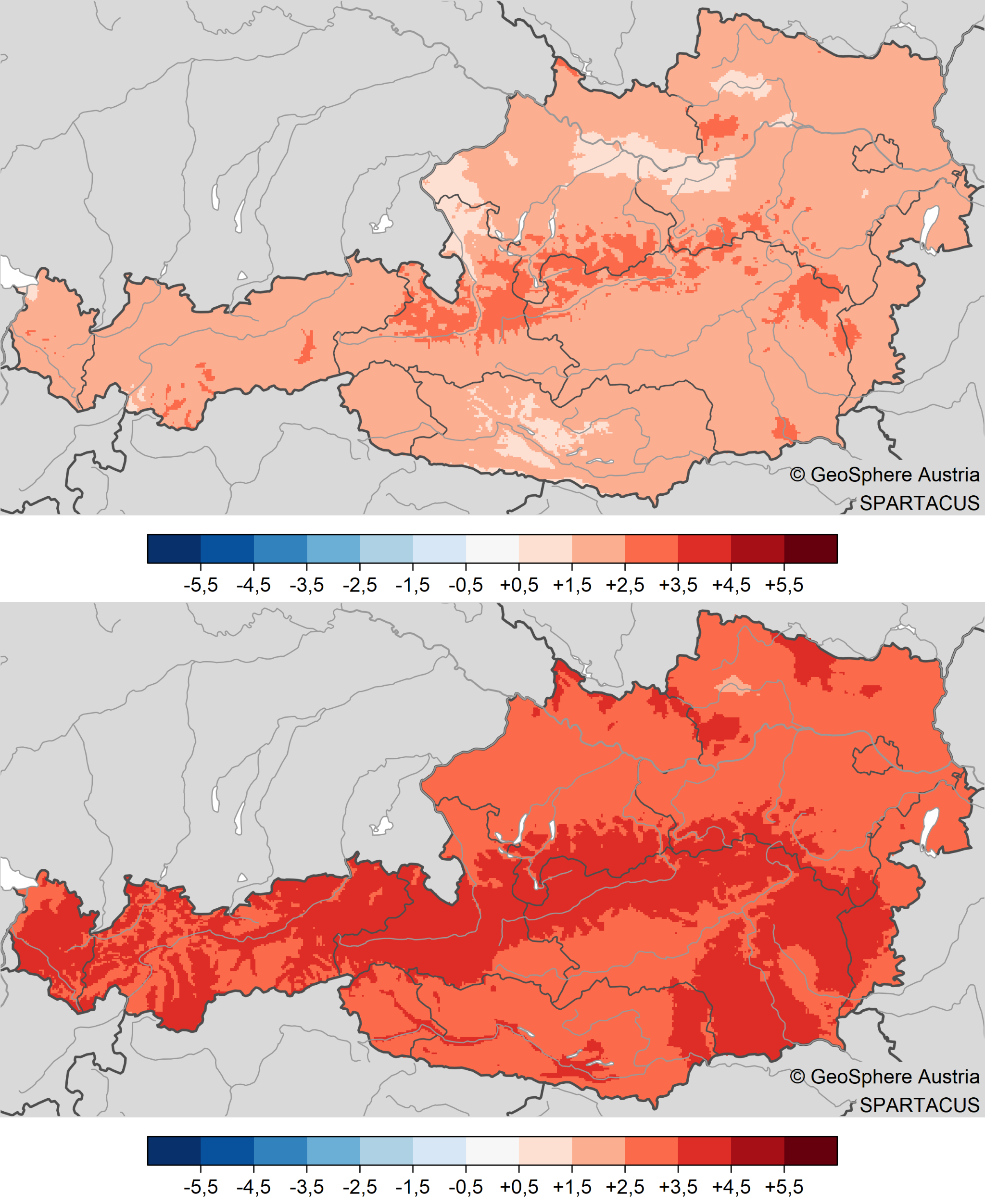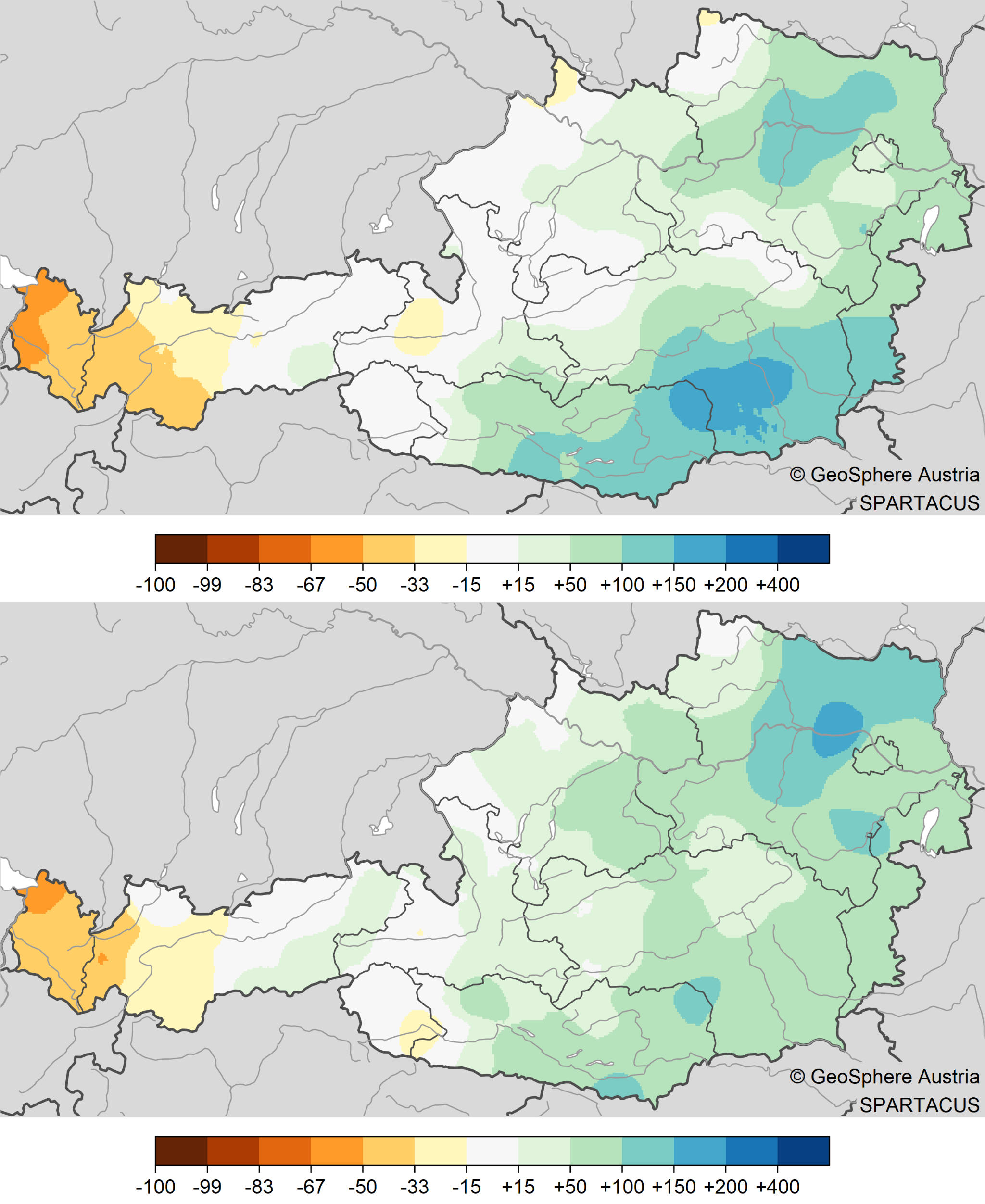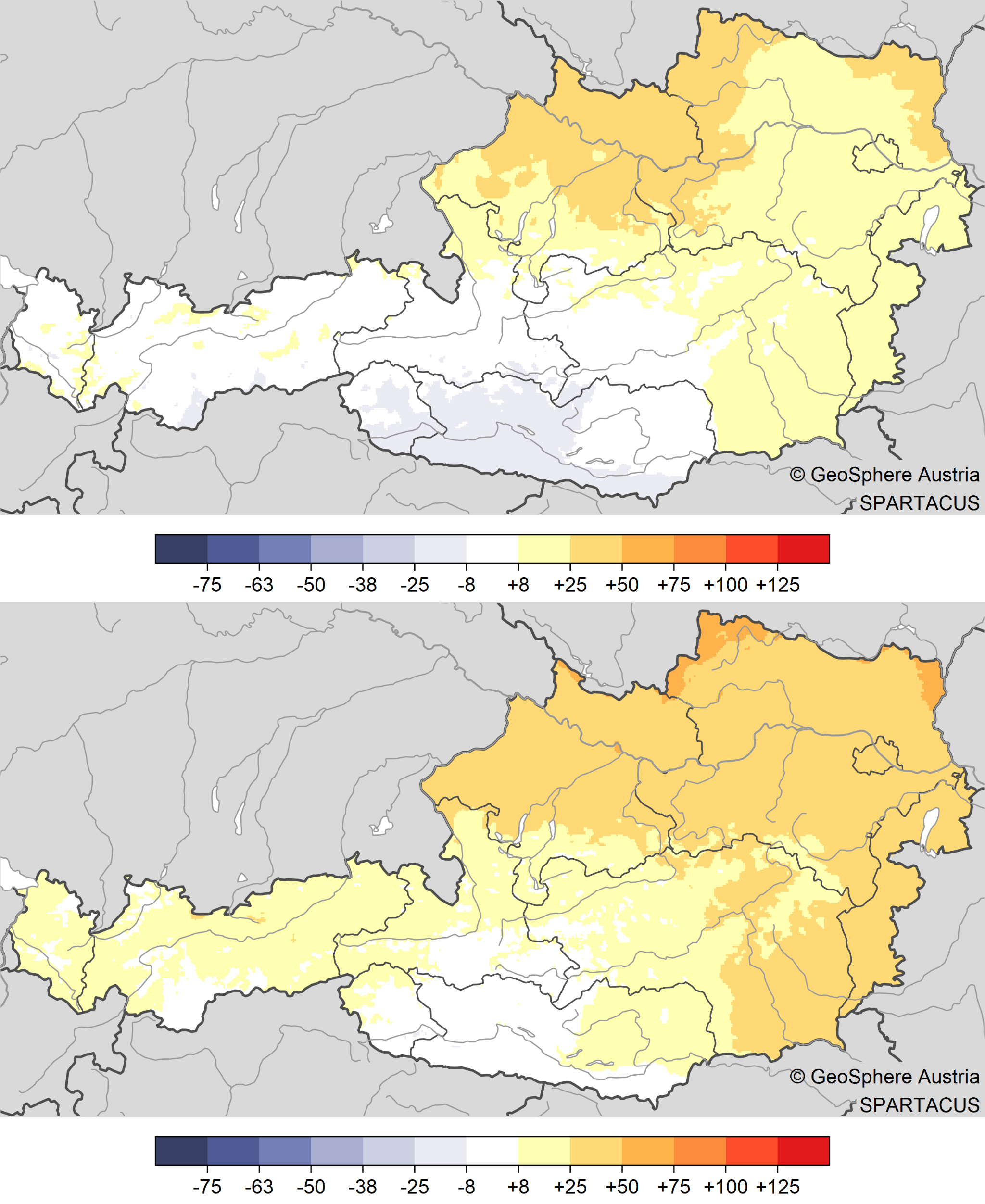March 2025: Mild, Sunny, and Partly Wet
Preliminary monthly summary from GeoSphere Austria: In Austria’s lowlands, March 2025 ranks 12th among the warmest March months on record; in the mountains, it ranks 11th.
As is typical for March, the last few weeks have seen spring-like and wintry weather. For example, 24.1 degrees were measured in Bad Vöslau (N) on 6 March 2025 and at the end of the month it snowed in many valleys - for example, a layer of snow several centimetres thick formed in Mariazell, Ramsau/Dachstein (both ST) and Seefeld (T).
‘Overall, weather conditions were predominantly warmer than average,’ says climatologist Alexander Orlik from GeoSphere Austria. ‘According to preliminary analysis, March 2025 was 1.7 °C above the 1991–2020 climate average in Austria’s lowlands and 2.3 °C above average in the mountains. This makes March 2025 the 12th warmest March in the 259-year measurement history in the lowlands, and the 11th warmest in the 175-year mountain data series.’
Compared to the 1961–1990 climate period, March 2025 was 3.0 °C above average in the lowlands and 3.6 °C warmer in the mountains.
Nationwide, March 2025 saw 37 % more precipitation than the long-term average. After several significantly dry Marches in recent years, this was the wettest March since 2009 (+74 % back then).
Regionally, there were significant differences in precipitation: In western Austria, most areas saw 15 to 30 % less precipitation than usual. In some parts of Vorarlberg, it was even 50 to 70 % below average. By contrast, southeastern and eastern Austria – ranging from Lower Carinthia through Styria and Burgenland to Lower Austria – experienced 30 to 70 % more precipitation than normal. Especially high values were recorded in southeastern Austria, from the Koralpe to Laßnitzhöhe, with 150 to 200 % more than average.
In mountainous regions above 1,500 meters, the north side of the Alps received 30 to 60 % less new snow than the long-term average. On the south side, snowfall was around average.
‘In the lower elevations, including state capitals, there were no significant snow accumulations in March 2025,’ says climatologist Alexander Orlik. ‘That has often been the case in recent years. Before the 2010s, however, March still regularly brought some snowfall in the lowlands.’
The number of sunshine hours in March 2025 was 11 % above the long-term average across Austria. It was sunniest in the north and east. It was somewhat cloudier than average in East Tyrol and Upper Carinthia.
Following average temperatures in February, the very mild March accelerated vegetation growth.
Zum Beispiel war der Blühbeginn der Saalweide mit 6. März 2025 (Mittel aller Beobachtungen in Österreich) um sechs Tage früher als in einem durchschnittlichen März im Zeitraum 1991 bis 2020 und um 15 Tage früher als im Zeitraum 1961 bis 1990.
For example, the goat willow began blooming on March 6, 2025 (average of all Austrian observations), six days earlier than the 1991–2020 average and 15 days earlier than the 1961–1990 average.



